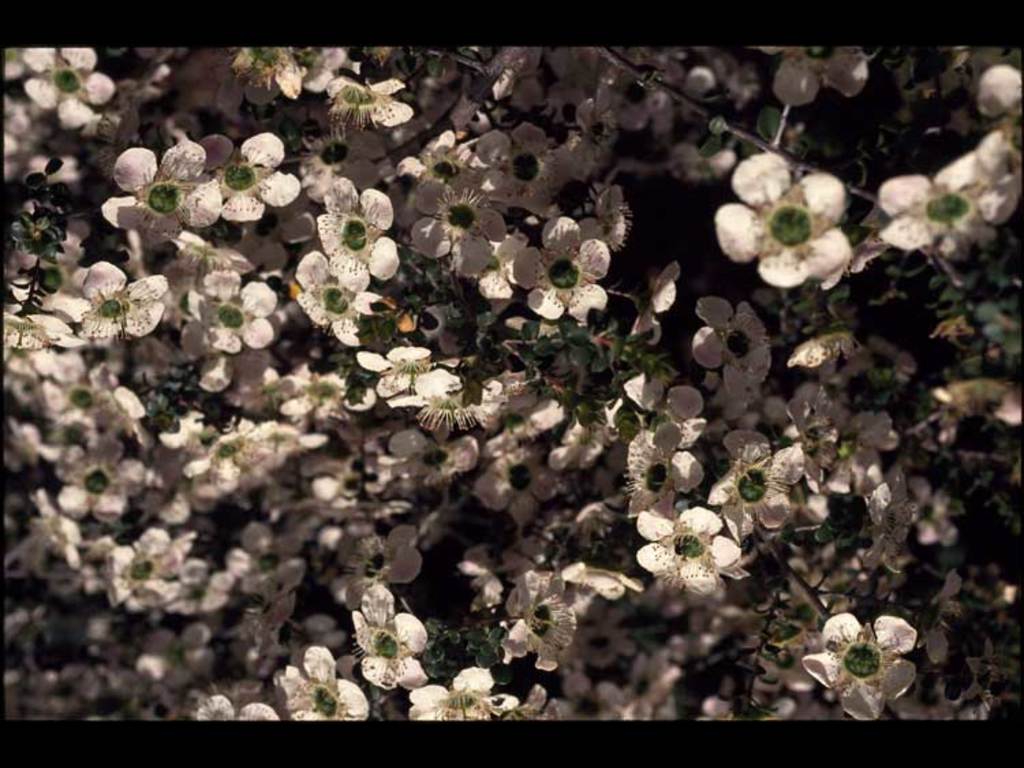Leptospermum brevipes 'Backwater Beauty'
- File Number
- 548
- ACRA Field Book Number
- 524
- Registration Date
- 24/11/2003
- Application Received
- 08/12/1994
- Family
- Myrtaceae
- Cultivar Name
- Leptospermum brevipes 'Backwater Beauty'
- Origin
- Leptospermum 'Backwater Beauty' is a prostrate variety of L. brevipes found growing naturally on a private property in the Backwater district in northern New South Wales. Only one plant was seen. No seed capsules were present on the plant despite it being well advanced. On subsequent visits to the property the plant could not be found. A change of ownership of the property has denied access for the last ten years and it is therefore not possible to verify if the plant still exists in the wild. Recently a researcher with the University of New England has discovered a small population of prostrate plants on a hillside in the district.
- Characteristics
- It grows as a dense groundcover to approximately 0.3m in height and 2m in width. Leaves ovate, acute tip; 8mm x 4mm wide; glabrous, green on upper surface, fine tomentum of silvery hairs on lower surface. Flowers white, 5 petals each 3 x 3mm. Flower diameter 1cm. Flower centres green surrounded by a ring of rusty red filaments. Calyx green, 2mm long and bearing 5 short teeth. Flower pedicel 5mm long. Buds have a light pink tinge. Diagnosis: The variety differs from the common form in - prostrate habit (L. brevipes is an upright, weeping shrub growing to 3m) -size, shape and colour of leaves (L. brevipes has longer, 14mm, and narrower, 3mm, leaves which are covered on both sides with a fine tomentum). - Flower colour (L. brevipes lacks the pale pink tinge present in this cultivar)
- Cultivation
- Trials in an Armidale garden have shown it to be drought tolerant and frost tolerant down to a screen temperature of -7 C. The plant flowers in spring and flowering last for about a month. Fruits are not persistent. Cutting grown plants will flower in pots, but the flowering stems are long and untidy so it is best grown as a garden plant. Its natural substrate is granite soil, but specimens have grown well on basaltic soil. Plants respond well to pruning to encourage bushiness. They also layer naturally and will cover large areas with little difficulty. Because of its proven hardiness, its low maintenance qualities and its groundcover feature, this variety has great potential for land-care projects, park plantings and erosion control.
- Publication
- Payne, W.H. (2001), Wildflower Cultivars. Australian Plants 21(166): 70
- Colour Coding
- RHS 1966
- Propagation
- Cuttings
- Applicant Name
- SGAP New England.
- Uses
- Groundcover suitable for mass planting or mixed in a shrubbery, or as a spectacular feature plant, Also very useful for large display pots.
- Availability
- Specialist native plant nurseries
- ANBG Accession Numbers
- ACC548, ACRA524/528, CBG9409540/9518034
- NSL ID
- -
